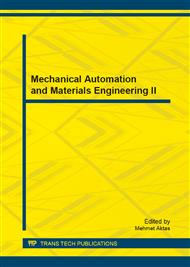p.430
p.434
p.439
p.444
p.448
p.455
p.460
p.465
p.471
Analysis on Pedestrian Speed at Signalized Intersections with Exclusive Pedestrian Phases
Abstract:
To analyze the pedestrian speed of at signalized intersections with exclusive pedestrian phases, data of pedestrian speed at 3 typical signalized intersections in Weihai were collected by video survey and artificial measurement and statistical analysis were conducted by SPSS. Influence factors including gender, different time and stage when pedestrian crossing the street. The 15th percentile speed of pedestrians crossing intersection was put forward which may provide theoretical base for the conformation of pedestrian green light of signalized intersections with exclusive pedestrian phases.
Info:
Periodical:
Pages:
448-452
Citation:
Online since:
June 2014
Authors:
Price:
Сopyright:
© 2014 Trans Tech Publications Ltd. All Rights Reserved
Share:
Citation:


